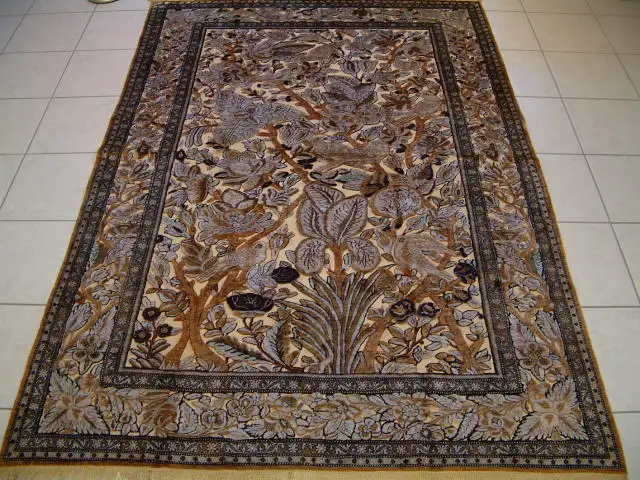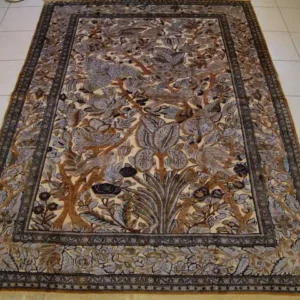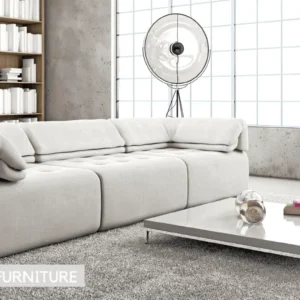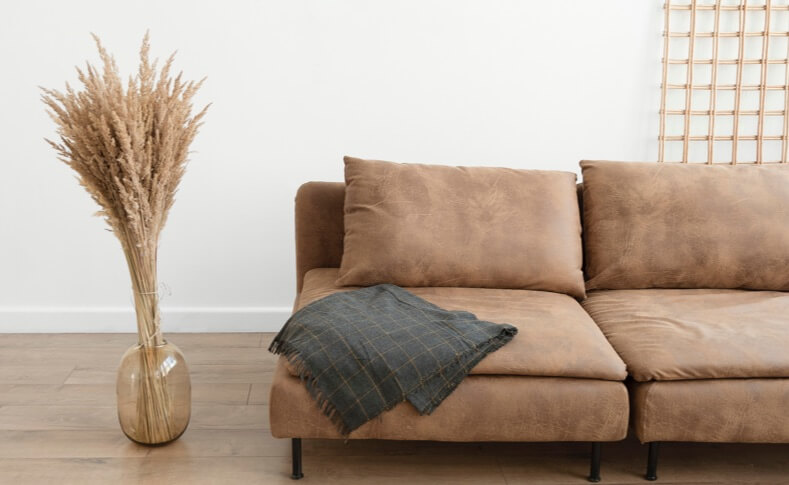Silk carpet weaving is an ancient art that has evolved into a refined craft. The use of silk threads enables a significantly higher density of knots, reaching up to 2 million knots per square meter, resulting in intricate and luxurious designs. Silk is extracted from the cocoons of silkworms during their metamorphosis. From 6 to 8 kg of cocoons, only about 1 kg of silk thread is obtained, which contributes to the high cost of silk carpets.
Although high knot density doesn’t necessarily determine the carpet’s quality, it enables more detailed and vibrant patterns. Creating a silk carpet is a slow, labor-intensive process, which further explains its higher value. Countries such as China, Turkey, and Iran (formerly known as Persia) have long-standing traditions in silk carpet weaving, each with its unique style and history.
Chinese Silk Carpets: Rich in Symbolism and Color
As the birthplace of silk, China has a long history of producing luxurious silk carpets. Traditional Chinese carpets often depicted narrative scenes such as hunting, daily life, or mythical creatures like dragons. Local plant-based dyes gave them a distinctive tone and richness.
Today, Chinese carpet production blends traditional motifs with Persian and Turkish influences. While many Chinese carpets maintain high artistic and quality standards, lower-quality imitations made from rayon using semi-automated techniques also exist in the market.
Turkish Silk Carpets: The Legacy of Hereke
Turkey is known for producing some of the finest antique silk carpets, especially from the Hereke region. These carpets were often woven using locally sourced silk and gold threads, making them exceptionally valuable.
In the 19th century, the Hereke Imperial Factory was established in Istanbul to produce carpets for the Ottoman court and as diplomatic gifts. After a series of setbacks, including fires and disease outbreaks among silkworms, Turkish silk carpet weaving declined. However, it experienced a revival in the 1930s. Today, Hereke carpets are celebrated for their delicate patterns and exceptional skill, made using premium Bursa silk.
Persian Silk Carpets: The Gold Standard of Carpet Weaving
Iran, formerly Persia, is globally renowned for its silk carpet heritage. Major weaving centers include Tabriz, Tehran, Isfahan, Kashan, and Qom. Each region contributes its unique touch to Persian carpet artistry:
Tabriz
Tabriz carpets are known for their fine weaving using both symmetrical and asymmetrical knots. They often feature floral or medallion designs on light backgrounds and use high-quality silk and natural dyes.
Isfahan
A historical art center, Isfahan is often called the “Florence of the East” due to its rich artistic legacy. Isfahan carpets often depict central medallions, gardens, or the tree of life, featuring soft plant-based patterns like the “Esumi” vine, which connects small motifs of leaves and flowers.
Kashan
Kashan silk carpets are produced in limited quantities and are distinguished by detailed medallion designs and border motifs such as the “Herati” pattern. They commonly use shades of green, aqua, blue, and sky tones.
Qom (Qum)
Qom became a major carpet center in the 20th century with backing from Kashani businessmen and Reza Shah Pahlavi. Qom carpets are admired for their graceful botanical motifs, inspired by Safavid-period art, and are considered among the finest in the world today.
Tehran
Tehran acts as a central hub for innovation in Persian carpet weaving. The city produces high-density silk carpets using the “Lul Baft” technique, known for vibrant red-lilac tones and meticulous craftsmanship.
Final Thoughts
Silk carpets are not just options to cover the floor, but they’re works of art, woven with centuries of culture, history, and expertise. Whether from China, Turkey, or Iran, each silk carpet tells a unique story through its patterns, materials, and artistry.
When choosing a silk carpet, consider:
- Origin and authenticity
- Knot density and design complexity
- Material quality (pure silk vs. blends)
- Dye durability
- Expertise and production method
Whether you’re a collector, interior designer, or simply someone who appreciates a fine final product, investing in a silk carpet means owning a timeless piece of cultural heritage.







